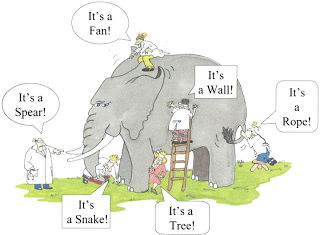Stock Market – Tips for Beginners
As a beginner, you must understand two things –
firstly never try to get rich in a day by doing over trading,
Secondly trading is not a hobby but a very competitive business.
So we have to control our emotions during trading &
Also have some basic understanding about the terms used in Stock Market.
Warren Buffett has suggested that every investor should be able to understand basic accountancy principles, an annual report and stock market history. You probably do not need to become an accountant, but being able to understand the scoring system of the game can only help.
We must check some basic informations about the company before investing in it
1. P/E Ratio (Price-To-Earnings Ratio) :-
P/E Ratio of a stock is a measure of the price paid for a share relative to the annual income or profit earned by the firm per share. A high P/E Ratio indicates that the share price is high relative to its current earning power. Possibly indicating that the stock is overvalued & a fall might be expected. In some cases a high P/E Ratio may also indicate that the company has good prospects for growth so we should study P/E Ratio along with other factors. The reciprocal of the P/E ratio is known as the earnings yield.
2. EPS (Earning Per Share) :-
Total earnings divided by the number of shares outstanding. Companies often use a weighted average of shares outstanding over the reporting term. Note that last year’s EPS would be actual, while current year and forward year EPS would be estimates.
3.DVI (Dividend yield):-
The yield a company pays out to its shareholders in the form of dividends. It is calculated by taking the amount of dividends paid per share over the course of a year and dividing by the stock’s price. A well established companies have higher dividend yields, than small growing companies.
4.Market Capitalization :-
Market capitalization represents the aggregate value of a company or stock. It is obtained by multiplying the number of shares outstanding by their current price per share. A common misconception is that the higher the stock price, the larger the company. Stock price, however, may misrepresent a company's actual worth.
Historically, large caps have experienced slower growth with lower risk. Meanwhile, small caps have experienced higher growth potential, but with higher risk.
5.Trading Volume :-
Trading Volume is the number of shares traded during a given period. In a stock has low trading volume both rise & fall are very sharp.
6.Operating Profit :-
A measure of a company's earning power from ongoing operations, equal to earnings before deduction of interest payments and income taxes. also called EBIT (earnings before interest and taxes) or operating income.
Who works Harder??? You or Your Money
DEAR FRIENDS IF YOU HAVE SOMETHING TO DISCUSS THEN PLEASE SEND
firstly never try to get rich in a day by doing over trading,
Secondly trading is not a hobby but a very competitive business.
So we have to control our emotions during trading &
Also have some basic understanding about the terms used in Stock Market.
Warren Buffett has suggested that every investor should be able to understand basic accountancy principles, an annual report and stock market history. You probably do not need to become an accountant, but being able to understand the scoring system of the game can only help.
We must check some basic informations about the company before investing in it
1. P/E Ratio (Price-To-Earnings Ratio) :-
P/E Ratio of a stock is a measure of the price paid for a share relative to the annual income or profit earned by the firm per share. A high P/E Ratio indicates that the share price is high relative to its current earning power. Possibly indicating that the stock is overvalued & a fall might be expected. In some cases a high P/E Ratio may also indicate that the company has good prospects for growth so we should study P/E Ratio along with other factors. The reciprocal of the P/E ratio is known as the earnings yield.
2. EPS (Earning Per Share) :-
Total earnings divided by the number of shares outstanding. Companies often use a weighted average of shares outstanding over the reporting term. Note that last year’s EPS would be actual, while current year and forward year EPS would be estimates.
3.DVI (Dividend yield):-
The yield a company pays out to its shareholders in the form of dividends. It is calculated by taking the amount of dividends paid per share over the course of a year and dividing by the stock’s price. A well established companies have higher dividend yields, than small growing companies.
4.Market Capitalization :-
Market capitalization represents the aggregate value of a company or stock. It is obtained by multiplying the number of shares outstanding by their current price per share. A common misconception is that the higher the stock price, the larger the company. Stock price, however, may misrepresent a company's actual worth.
Historically, large caps have experienced slower growth with lower risk. Meanwhile, small caps have experienced higher growth potential, but with higher risk.
5.Trading Volume :-
Trading Volume is the number of shares traded during a given period. In a stock has low trading volume both rise & fall are very sharp.
6.Operating Profit :-
A measure of a company's earning power from ongoing operations, equal to earnings before deduction of interest payments and income taxes. also called EBIT (earnings before interest and taxes) or operating income.
Who works Harder??? You or Your Money
DEAR FRIENDS IF YOU HAVE SOMETHING TO DISCUSS THEN PLEASE SEND


Comments
Post a Comment